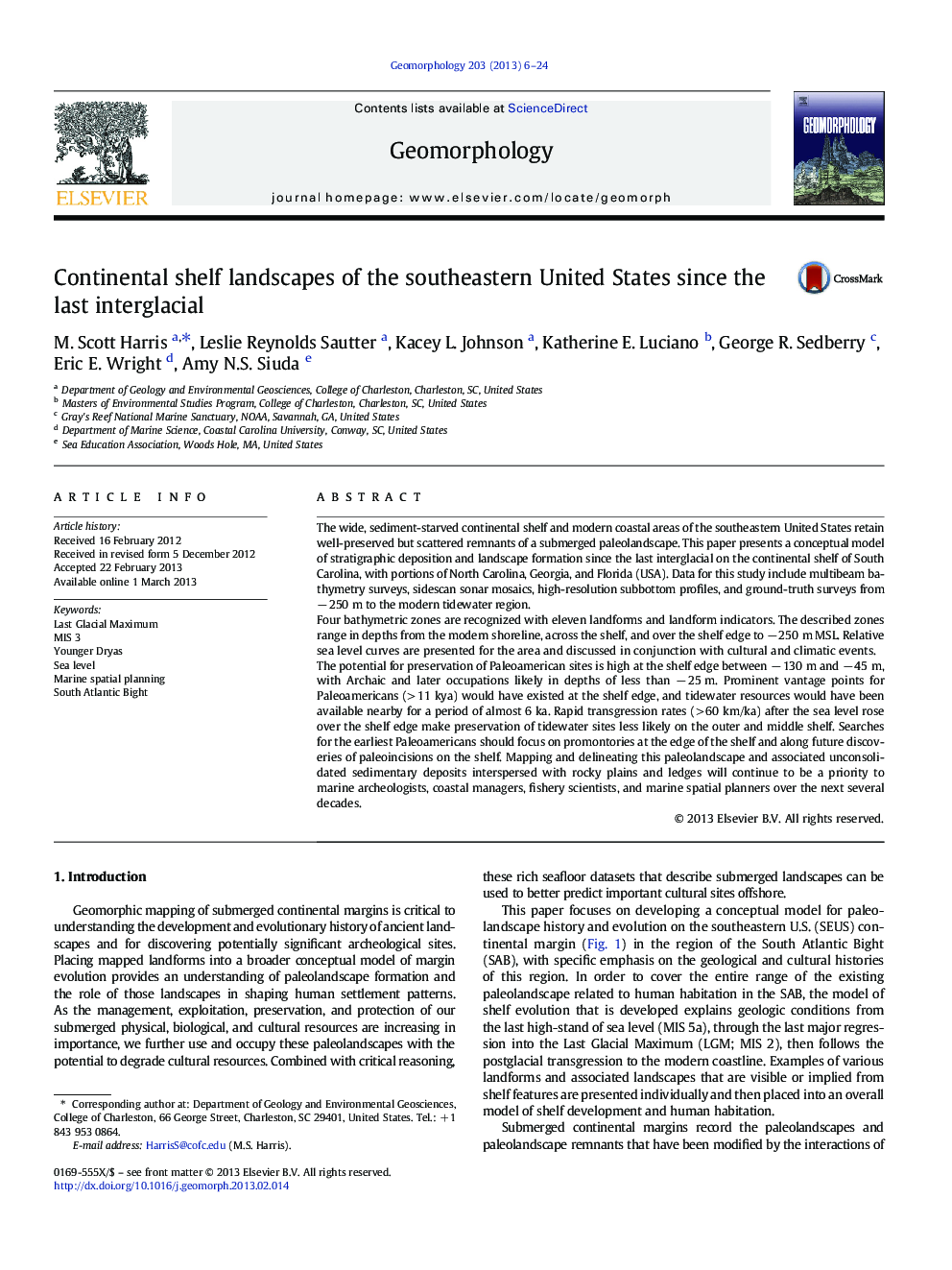| کد مقاله | کد نشریه | سال انتشار | مقاله انگلیسی | نسخه تمام متن |
|---|---|---|---|---|
| 6432818 | 1635446 | 2013 | 19 صفحه PDF | دانلود رایگان |
- The paleolandscapes of the SE-US continental shelf are revealed for Late Quaternary.
- Sea level curves for the SE-US are presented from LGM-recent with paleolandscapes.
- Last Glacial Maximum shoreline is identified at â 125 m with seismics in subsurface.
- Hypotheses about Paleoamerican habitation sites are presented.
The wide, sediment-starved continental shelf and modern coastal areas of the southeastern United States retain well-preserved but scattered remnants of a submerged paleolandscape. This paper presents a conceptual model of stratigraphic deposition and landscape formation since the last interglacial on the continental shelf of South Carolina, with portions of North Carolina, Georgia, and Florida (USA). Data for this study include multibeam bathymetry surveys, sidescan sonar mosaics, high-resolution subbottom profiles, and ground-truth surveys from â 250 m to the modern tidewater region.Four bathymetric zones are recognized with eleven landforms and landform indicators. The described zones range in depths from the modern shoreline, across the shelf, and over the shelf edge to â 250 m MSL. Relative sea level curves are presented for the area and discussed in conjunction with cultural and climatic events.The potential for preservation of Paleoamerican sites is high at the shelf edge between â 130 m and â 45 m, with Archaic and later occupations likely in depths of less than â 25 m. Prominent vantage points for Paleoamericans (> 11 kya) would have existed at the shelf edge, and tidewater resources would have been available nearby for a period of almost 6 ka. Rapid transgression rates (> 60 km/ka) after the sea level rose over the shelf edge make preservation of tidewater sites less likely on the outer and middle shelf. Searches for the earliest Paleoamericans should focus on promontories at the edge of the shelf and along future discoveries of paleoincisions on the shelf. Mapping and delineating this paleolandscape and associated unconsolidated sedimentary deposits interspersed with rocky plains and ledges will continue to be a priority to marine archeologists, coastal managers, fishery scientists, and marine spatial planners over the next several decades.
Journal: Geomorphology - Volume 203, 1 December 2013, Pages 6-24
